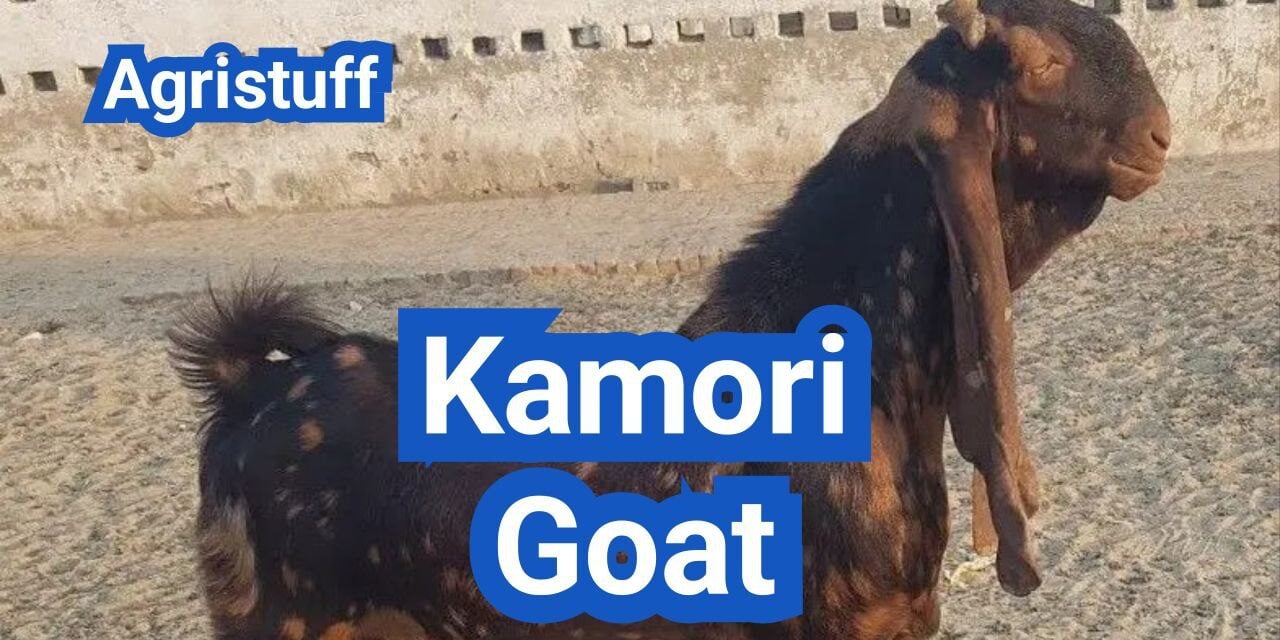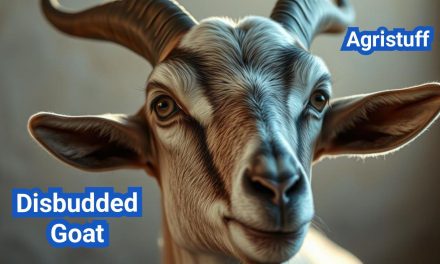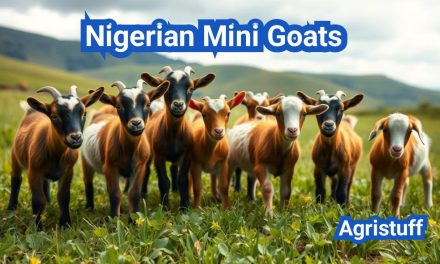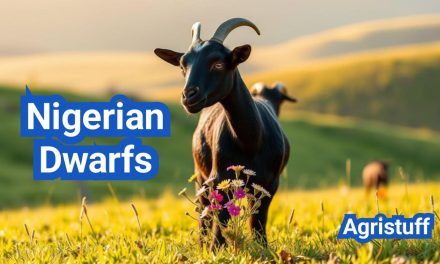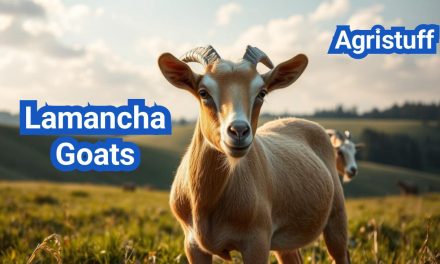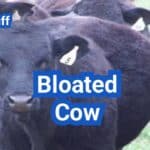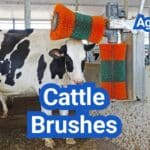The Kamori goat is a rare and distinctive breed native to the Sindh province of Pakistan. Known for its high-quality milk production, this breed has garnered attention worldwide.
Originating in the Sindh province, the Kamori goat has a rich history and unique characteristics that set it apart from other dairy goat breeds. Its milk production capabilities make it a valuable asset for dairy farming.
This article will delve into the history, origin, and characteristics of the Kamori goat, as well as its breeding practices, uses, and growing popularity in the U.S. and other countries.
Key Takeaways
- Understanding the origins and history of the Kamori goat breed.
- Exploring the characteristics that make Kamori goats unique.
- Learning about the breeding practices for Kamori goats.
- Discovering the uses of Kamori goats in dairy farming.
- The growing popularity of Kamori goats in the U.S. and other countries.
The Kamori Goat Breed: An Overview
The Kamori goat breed stands out in the global agricultural landscape due to its impressive size, notable milk production, and distinctive physical characteristics. This breed has garnered attention worldwide for its unique attributes and significant contributions to the dairy industry.
What Makes Kamori Goats Unique
Kamori goats are distinguished by their large size and long ears, characteristics that set them apart from other breeds. Their high milk production is another notable feature, making them a valuable resource in dairy farming. The breed’s adaptability to various environments further enhances its appeal to farmers globally.
The unique combination of size, milk production, and physical characteristics makes Kamori goats an attractive choice for dairy farmers. Their ability to thrive in different conditions adds to their desirability.
Global Significance of the Breed
The Kamori goat breed holds significant global importance due to its contributions to the dairy industry. Originating in Pakistan, the breed has spread to other parts of the world, gaining recognition for its high-quality milk and robust nature. The global significance of Kamori goats is further underscored by their potential to improve dairy farming practices worldwide.
As the demand for high-quality dairy products continues to rise, breeds like the Kamori goat are becoming increasingly important. Their ability to produce high volumes of milk while adapting to various environments makes them a valuable asset in global dairy farming.
Scientific Classification
The Kamori goat is scientifically classified under the species Capra aegagrus hircus. This classification places the Kamori goat within the broader category of domesticated goats, highlighting its genetic relationship to other goat breeds. Understanding the scientific classification of the Kamori goat provides insights into its evolutionary history and genetic characteristics.
The classification of Kamori goats as Capra aegagrus hircus reflects their domesticated status and their role in agricultural practices. This scientific understanding is crucial for breeding programs and conservation efforts aimed at preserving the breed’s unique traits.
History and Origin of Kamori Goats

The Kamori goat breed has a storied past that traces back to the ancient lands of the Indus Valley Civilization. This historical context is crucial in understanding the breed’s development and its significance in modern times.
Ancient Origins in Sindh Province, Pakistan
Kamori goats originated in the Sindh province of Pakistan, a region known for its rich agricultural heritage and diverse livestock. The breed’s development is closely tied to the local culture and the historical practices of the region.
The Sindh province, with its fertile plains and favorable climate, provided an ideal environment for the breeding and raising of Kamori goats. Over time, the breed adapted to the local conditions, developing characteristics that made it highly valued for its milk and meat production.
Historical Development of the Breed
The historical development of Kamori goats is a testament to the agricultural practices and breeding techniques employed by local farmers over centuries. The breed was developed through selective breeding, focusing on traits such as milk production, meat quality, and adaptability to the local climate.
| Period | Significant Events in Kamori Goat History |
|---|---|
| Indus Valley Civilization | Initial domestication of goats, laying the foundation for the Kamori breed. |
| Medieval Period | Selective breeding practices began, focusing on milk and meat production. |
| Modern Era | Conservation efforts and modern breeding techniques were introduced to preserve the breed. |
Cultural Significance in South Asia
Kamori goats hold significant cultural value in South Asia, particularly in Pakistan, where they are considered a symbol of agricultural prosperity. They are often featured in local festivals and are valued for their contribution to the rural economy.
The breed’s cultural significance extends beyond its economic value, representing a connection to the region’s heritage and traditional practices. Efforts to preserve the Kamori goat breed are not only about maintaining a livestock population but also about preserving a cultural legacy.
Physical Characteristics of Kamori Goats
Kamori goats are renowned for their impressive physical stature and distinctive features. These characteristics not only make them stand out among other breeds but also contribute to their popularity among farmers and breeders.
Size and Weight
Kamori goats are known for their large size. Males can weigh up to 100 kg, while females typically weigh up to 65 kg. This substantial weight is a result of their robust body structure, making them one of the larger goat breeds.
The size of Kamori goats is not just limited to their weight; they also have a considerable height and body length. This size, combined with their strength, makes them well-suited for various agricultural tasks.
Distinctive Features
One of the most distinctive features of Kamori goats is their long ears. These ears are not only a breed characteristic but also serve a functional purpose, helping the goats to dissipate heat in warm climates.
In addition to their long ears, Kamori goats have a robust body that is well-muscled and capable of withstanding the demands of both milk production and physical labor. Their overall physique is a testament to their hardiness and adaptability.
Horn Development in Males and Females
Horn development is another significant physical characteristic of Kamori goats. Both males and females can develop horns, although the size and shape can vary between the sexes.
In males, horns tend to be larger and more pronounced, often used for defense and establishing dominance within a herd. Females also develop horns, though they are generally smaller and less curved than those found in males.
| Characteristic | Males | Females |
|---|---|---|
| Weight (kg) | Up to 100 | Up to 65 |
| Horn Size | Larger, more pronounced | Smaller, less curved |
| Ear Length | Long | Long |
As noted by a breeder, “The physical characteristics of Kamori goats, including their size and horn development, make them a valuable asset for any farm or agricultural operation.”
“The Kamori goat is a hardy breed, well-suited to the demands of small-scale farming. Their size, strength, and milk production capabilities make them an ideal choice for many farmers.”
— Kamori Goat Breeder Association
Temperament and Behavior

Understanding the temperament and behavior of Kamori goats is crucial for successful breeding and management. Their docile nature and social behavior make them a popular choice among goat breeders.
Docile Nature and Handling
Kamori goats are known for their calm and gentle disposition, which makes them easy to handle. This docile nature is one of the breed’s most significant advantages, allowing farmers to manage them with minimal stress.
Handling Kamori goats requires a gentle approach, as they respond well to positive reinforcement and calm environments. Their temperament makes them suitable for a variety of farming operations, from small-scale to large commercial enterprises.
Social Behavior in Herds
Kamori goats are social animals that thrive in herds. They exhibit complex social behaviors, including hierarchical structures within the group. Understanding these dynamics is essential for effective herd management.
| Social Behavior | Description |
|---|---|
| Hierarchy | Establishes a pecking order within the herd |
| Interaction | Goats interact through body language and vocalizations |
| Flocking | Tendency to stay together as a group |
Adaptability to Different Environments
Kamori goats demonstrate a remarkable ability to adapt to various environments. Their adaptability is a key factor in their global distribution, allowing them to thrive in different climates and farming systems.
Climate Tolerance and Preferences
While Kamori goats can adapt to a range of climates, they show a preference for certain conditions. They are generally more tolerant of hotter climates, having originated in the Sindh province of Pakistan. However, they still require adequate shelter and care to thrive in extreme weather conditions.
- Prefer warmer temperatures
- Require shelter from extreme weather
- Need access to clean water and nutrition
Kamori Goat Breeding Practices
Breeding Kamori goats requires a comprehensive understanding of their reproductive cycle and genetic factors. Successful breeding practices are essential for maintaining the health and productivity of the herd.
Reproductive Cycle
The reproductive cycle of Kamori goats is a critical aspect of their breeding. Kamori goats have a relatively long reproductive cycle, which allows for careful planning of breeding programs. Understanding the estrous cycle, gestation period, and factors influencing reproductive health is vital.
- Estrous cycle duration: typically 18-24 days
- Gestation period: approximately 150 days
- Factors influencing reproductive health: nutrition, health conditions, and environmental stress
Breeding Season and Timing
The breeding season for Kamori goats is often timed to coincide with favorable environmental conditions, ensuring optimal health and nutrition for the does and kids. Breeding programs are typically designed to achieve kidding during periods of abundant feed and mild weather.
- Identify the optimal breeding season based on local climate and feed availability
- Plan breeding to achieve kidding during favorable conditions
- Monitor and adjust breeding programs as necessary to maintain herd health
Kidding Process and Care
The kidding process is a critical phase in the breeding cycle, requiring careful monitoring and care to ensure the health of both the doe and kids. Proper care during kidding includes providing a clean environment, monitoring for complications, and ensuring adequate nutrition for the doe.
Genetic Considerations for Breeding
Genetic considerations play a crucial role in Kamori goat breeding programs. Maintaining genetic diversity is essential to prevent inbreeding depression and ensure the long-term health and productivity of the herd. Breeding programs should aim to select for desirable traits while maintaining a diverse gene pool.
- Selection for desirable traits: milk production, growth rate, and disease resistance
- Maintaining genetic diversity: avoiding inbreeding, introducing new genetics
- Record keeping: maintaining detailed breeding records to inform selection decisions
Housing and Care Requirements
Proper housing is crucial for the health and well-being of Kamori goats. These animals are sensitive to extreme temperatures and humidity, making it essential to design their living spaces carefully.
Shelter Design for Kamori Goats
The shelter for Kamori goats should be well-ventilated, dry, and protected from wind and rain. Adequate ventilation is crucial to prevent the buildup of ammonia from their waste, which can lead to respiratory issues. The shelter should be designed to allow for easy cleaning and disinfection.
Roofing material should be durable and able to withstand various weather conditions. In regions with high temperatures, using reflective roofing materials can help reduce heat stress.
Space Requirements
Kamori goats require sufficient space to move around comfortably. The recommended space per goat is about 10-15 square feet indoors and at least 0.5 acres outdoors for grazing and exercise. Adequate space helps reduce stress and prevents health issues related to overcrowding.
Environmental Considerations
The living environment of Kamori goats should be free from hazards such as sharp objects, toxic plants, and standing water. Regular inspections of the enclosure are necessary to identify and mitigate potential risks.
Kamori goats are sensitive to extreme temperatures. In hot climates, providing shade and adequate ventilation is crucial. In colder climates, ensuring the shelter is draft-free and well-insulated is essential.
Daily Care Routine
A daily care routine for Kamori goats includes feeding, health checks, and cleaning of their living area. Feeding should be done at regular intervals, and the quality of feed should be monitored to ensure it meets nutritional standards.
Health checks involve monitoring for signs of illness or injury, checking for parasites, and ensuring that vaccinations are up to date.
- Clean the living area regularly to prevent disease.
- Provide fresh water at all times.
- Monitor the goats’ behavior and health daily.
By following these guidelines, farmers can ensure that their Kamori goats receive the care they need to thrive.
Feeding and Nutrition Plan

A well-planned feeding and nutrition plan is crucial for the health and productivity of Kamori goats. As ruminants, Kamori goats require a diet rich in fiber, with access to clean water and appropriate supplementation to meet their nutritional needs.
Basic Dietary Requirements
Kamori goats need a balanced diet that includes high-quality forage, such as hay, grass, and other vegetation. Their diet should be rich in fiber to support their rumen health. “A diet lacking in fiber can lead to digestive issues,” according to goat farming experts. It’s essential to provide a mix of browse and forage to keep their digestive system healthy.
Feeding Schedule
Establishing a consistent feeding schedule is vital for Kamori goats. They should be fed twice a day, with a mix of forage and concentrates. The feeding schedule should be adjusted according to their age, size, and production level. For instance, lactating does may require more nutrients than dry does.
Supplementation Needs
Depending on the nutritional needs of the Kamori goats, supplementation may be necessary. This can include minerals and vitamins to ensure they receive a balanced diet. It’s crucial to work with a veterinarian or a qualified animal nutritionist to determine the best supplementation plan. Proper supplementation can significantly impact their health and productivity.
Water Requirements
Access to clean, fresh water is essential for Kamori goats. They require a significant amount of water, especially during hot weather or when lactating. Ensuring that their water supply is clean and readily available is crucial for their overall health. As stated by agricultural experts, “Clean water is as important as food for the health of goats.”
Kamori Goat Milk Production
The Kamori goat breed is renowned for its exceptional milk production capabilities. Kamori goats are known for their high milk yield, with some females producing up to 2 liters of milk per day. This makes them an attractive choice for dairy farming. The milk is rich in protein and fat, making it ideal for producing high-quality dairy products.
Milk Yield Statistics
Kamori goats are among the top milk-producing breeds. On average, a healthy Kamori goat can produce between 1.5 to 2 liters of milk daily. The lactation period typically lasts around 6 to 8 months, with peak production occurring in the early stages of lactation.
Milking Techniques
Effective milking techniques are crucial for maximizing milk yield and maintaining the health of the udder. For Kamori goats, a gentle and consistent milking routine is recommended. This involves cleaning the udder, followed by the actual milking process, and finishing with a post-milking teat dip to prevent infections.
Milk Composition and Quality
The milk of Kamori goats is characterized by its high protein and fat content, making it suitable for cheese and butter production. The average composition includes around 4% fat and 3.5% protein, though these values can vary based on factors like diet and genetics.
| Milk Component | Average Percentage |
|---|---|
| Fat | 4% |
| Protein | 3.5% |
| Lactose | 4.5% |
Processing Kamori Goat Milk
The milk from Kamori goats can be processed into various dairy products, including cheese, yogurt, and butter. The high fat content makes it particularly suitable for cheese production. Proper pasteurization and handling are essential to maintain the quality and safety of the milk and its products.
Commercial Uses of Kamori Goats
Kamori goats have been gaining attention for their diverse commercial uses, ranging from meat and fiber production to land management. Their versatility makes them a valuable asset for farmers and industries alike.
Meat Production and Quality
Kamori goats are raised for their meat, which is considered lean and flavorful. The meat is in high demand due to its quality and taste, making it a profitable venture for farmers.
The breed’s characteristics, such as its growth rate and muscle development, contribute to its suitability for meat production. Farmers appreciate the Kamori goat for its ability to produce high-quality meat with relatively low fat content.
Fiber and Cashmere Production
Apart from meat production, Kamori goats are also valued for their fiber. Their hair is used to produce durable textiles, making them an important part of the textile industry.
The quality of the fiber obtained from Kamori goats is high, and it is often used in crafting clothing and other textile products. The soft undercoat of the Kamori goat can be used to produce cashmere, a highly prized material in the textile industry.
Land Management Applications
Kamori goats play a significant role in land management due to their grazing habits. They are used for controlling vegetation and maintaining open spaces, which can help in preventing wildfires and promoting biodiversity.
Their ability to graze on a variety of plants makes them useful for managing different types of landscapes. By controlling brush and weed growth, Kamori goats can help maintain the health of pastures and reduce the risk of invasive species.
Cultural and Ceremonial Uses
In addition to their commercial uses, Kamori goats hold cultural and ceremonial significance in certain regions. They are often used in traditional ceremonies and are considered an important part of cultural heritage.
The breed’s cultural significance is deeply rooted in its history and the role it has played in the lives of people in regions where it is raised. Kamori goats are not only a source of income but also a symbol of tradition and cultural identity.
Disease Management and Health Care

Maintaining the health of Kamori goats involves a comprehensive approach to disease management and preventive care. Kamori goats are susceptible to various diseases, including parasites and viral infections, which can significantly impact their health and productivity.
Common Health Issues
Kamori goats are prone to several common health issues, including internal parasites, respiratory infections, and reproductive problems. Internal parasites, such as worms, are a significant concern and can lead to weight loss, reduced milk production, and even death if left untreated.
Common diseases affecting Kamori goats include:
- Parasitic infections (e.g., worms, ticks)
- Respiratory diseases (e.g., pneumonia)
- Reproductive issues (e.g., abortion, infertility)
Preventive Care
Preventive care is essential for maintaining the health of Kamori goats. Regular health checks, vaccinations, and parasite control measures are critical components of a preventive care program.
Key preventive care measures include:
- Regular vaccinations against common diseases
- Parasite control through deworming and tick management
- Proper nutrition and feeding practices
- Clean and safe living conditions
Emergency Health Situations
Despite preventive measures, emergency health situations can arise. It is crucial to be prepared to respond quickly and effectively to minimize the impact on the goat’s health.
Signs of emergency health situations include:
- Severe illness or injury
- Difficulty breathing
- Severe diarrhea or dehydration
- Abnormal behavior
Working with Veterinarians
Working closely with a veterinarian is vital for maintaining the health of Kamori goats. Regular check-ups, advice on health management, and prompt treatment of health issues are all critical aspects of a successful health care program.
| Health Issue | Prevention Method | Treatment |
|---|---|---|
| Internal Parasites | Regular deworming, pasture management | Deworming medication |
| Respiratory Diseases | Vaccination, clean living conditions | Antibiotics, supportive care |
| Reproductive Issues | Proper breeding practices, health checks | Veterinary consultation, specific treatments |
Kamori Goats in the United States

The introduction of Kamori goats to the United States marks a significant development in the country’s goat breeding industry. As farmers and breeders look for diverse and high-quality goat breeds, Kamori goats are gaining attention for their unique characteristics and adaptability.
Introduction and Adaptation
Kamori goats, originating from the Sindh province of Pakistan, are being introduced to the U.S. market. Their adaptation to new environments is a crucial factor in their success. Initial observations suggest that these goats can thrive in various conditions, making them suitable for different regions across the country.
Adaptation Challenges: While Kamori goats show promise, they face challenges adapting to the diverse climates and environments of the United States. Breeding programs are focusing on enhancing their resilience and productivity.
Current Population and Distribution
The current population of Kamori goats in the U.S. is relatively small but growing. They are primarily found in regions with established goat breeding industries. The distribution is limited, but efforts are being made to expand their presence across the country.
| State | Number of Farms | Approximate Population |
|---|---|---|
| California | 5 | 200 |
| Texas | 3 | 150 |
| Oregon | 2 | 100 |
Breeding Programs in the USA
Several breeding programs are underway to promote the growth and adaptation of Kamori goats in the U.S. These programs focus on improving the breed’s genetic diversity, milk production, and meat quality.
Genetic Diversity: Efforts are being made to maintain the genetic diversity of Kamori goats by importing genetic material from Pakistan and other countries.
Regulatory Considerations
The importation and breeding of Kamori goats in the U.S. are subject to various regulatory considerations. Breeders must comply with health regulations, import laws, and animal welfare standards.
Health Regulations: Compliance with U.S. health regulations is crucial for the successful introduction of Kamori goats. This includes testing for diseases and adherence to quarantine protocols.
Price and Availability of Kamori Goats

The price of Kamori goats varies significantly based on several key factors, including age, quality, and location. As a rare and high-quality breed, Kamori goats command a premium price in the market.
Market Value and Factors Affecting Price
Several factors influence the market value of Kamori goats. These include:
- Age: Younger goats typically cost less than mature ones, with prices increasing as the goat reaches breeding age.
- Quality: Goats with superior genetic lineage, better physical characteristics, and higher milk or meat production potential are more expensive.
- Location: Geographical location plays a significant role, with prices varying between regions due to factors like demand, local breeding practices, and regulatory environments.
- Breeding Potential: Goats with proven breeding potential or those that are part of a reputable breeding program can command higher prices.
Understanding these factors is crucial for both buyers and sellers to determine fair market prices.
Where to Purchase Kamori Goats
Potential buyers can find Kamori goats through various channels:
- Reputable Breeders: Specialized breeders who focus on Kamori goats often have a deep understanding of the breed and can provide high-quality animals.
- Agricultural Shows and Exhibitions: Events where breeders showcase their animals can be a good place to find Kamori goats and network with breeders.
- Online Marketplaces: Some online platforms specialize in connecting buyers with breeders of specific goat breeds.
Import Considerations
For those looking to import Kamori goats, several considerations come into play:
- Regulatory Compliance: Understanding and complying with import regulations, including health certificates and quarantine requirements, is essential.
- Shipping and Logistics: The cost and logistics of transporting goats internationally can be significant.
- Quarantine and Acclimatization: Plans for quarantine and acclimatization upon arrival should be in place to minimize stress on the animals.
Investment Return Potential
Kamori goats can be a valuable investment for those interested in dairy or meat production, or for breeding purposes. Their rarity and high quality can lead to a strong return on investment, especially if managed properly.
In conclusion, the price and availability of Kamori goats are influenced by a complex array of factors. Potential buyers and breeders must carefully consider these elements to make informed decisions.
Comparing Kamori Goats with Other Breeds

When it comes to dairy goat breeds, Kamori goats stand out for their exceptional milk production and adaptability. This section will compare Kamori goats with other breeds, highlighting their unique characteristics and advantages.
Kamori vs. Pateri Goats
Kamori goats are often compared to Pateri goats, another breed found in the Sindh region of Pakistan. While both breeds are known for their milk production, Kamori goats have a higher milk yield. Pateri goats are smaller in size and have a more compact body, but Kamori goats are preferred for their higher productivity.
Comparison with Other Dairy Breeds
Kamori goats are also compared to other dairy breeds such as Saanen goats and Alpine goats. While Saanen goats are known for their high milk production, Kamori goats are more adaptable to hot climates. Alpine goats, on the other hand, are versatile but may not match Kamori goats in terms of milk yield in hot environments.
- Kamori goats have a higher milk yield than many other breeds in hot climates.
- They are more adaptable to harsh environmental conditions.
- Their milk is rich in quality and is used for various dairy products.
Advantages for Hot Climates
One of the significant advantages of Kamori goats is their ability to thrive in hot climates. Their heat tolerance makes them an ideal choice for dairy farming in regions with high temperatures. This adaptability is a crucial factor in their popularity among farmers in South Asia and other hot regions.
Disadvantages and Challenges
Despite their advantages, Kamori goats also have some disadvantages. They require regular care and nutrition to maintain their high milk production. Additionally, their adaptability to new environments can be a challenge if not managed properly. Farmers need to be aware of these challenges to successfully breed Kamori goats.
In conclusion, Kamori goats offer several advantages over other breeds, particularly in hot climates. Their high milk production and adaptability make them a valuable asset for dairy farmers. However, they also require careful management to overcome potential challenges.
The Future of Kamori Goat Farming
Kamori goat farming presents a promising future, blending sustainability with profitability. As the industry continues to evolve, it faces both challenges and opportunities that will shape its trajectory.
The sustainability of Kamori goat farming is rooted in its adaptability to various environments and its potential for efficient land management. These goats are well-suited to hot climates, making them an attractive option for farmers in regions with such conditions.
Despite the opportunities, the industry must address challenges such as disease management and market fluctuations. By adopting best practices in breeding, care, and nutrition, farmers can mitigate these risks and capitalize on the growing demand for Kamori goat products.
As the global market for specialty dairy and meat products expands, Kamori goat farming is poised for growth. With its rich history, unique characteristics, and potential for sustainable production, this breed is set to play a significant role in the future of agriculture.
FAQ
What is the origin of the Kamori goat breed?
The Kamori goat breed originated in the Sindh province of Pakistan, where it has been raised for centuries.
What are the distinctive physical characteristics of Kamori goats?
Kamori goats are known for their large size, long ears, and robust body. They can have horns, and their coat is typically brown or black in color.
How much milk do Kamori goats produce?
Kamori goats are known for their high milk production, with some females producing up to 2-3 liters of milk per day.
What is the temperament of Kamori goats?
Kamori goats are known for their docile nature, making them easy to handle and care for.
What are the housing requirements for Kamori goats?
Kamori goats require shelter that protects them from extreme weather conditions, with adequate ventilation and space to move around.
What is the feeding plan for Kamori goats?
Kamori goats require a balanced diet that includes high-quality hay, grains, and minerals, with access to clean drinking water at all times.
Are Kamori goats used for meat production?
Yes, Kamori goats are raised for their meat, which is considered lean and flavorful.
Can Kamori goats be used for land management?
Yes, Kamori goats are used for land management applications, such as grazing to control weeds and maintain grassland ecosystems.
Are Kamori goats prone to any specific health issues?
Kamori goats are generally hardy, but they can be prone to certain health issues, such as parasites and respiratory problems, if not properly cared for.
How much do Kamori goats cost?
The price of Kamori goats varies depending on factors such as age, quality, and location, but they are generally considered to be a premium breed.
Are Kamori goats available in the United States?
Yes, Kamori goats are available in the United States, although they may be less common than other breeds.
How do Kamori goats compare to other dairy breeds?
Kamori goats are known for their high milk production and are often compared to other dairy breeds, such as the Pateri goat, in terms of their milk yield and quality.
Conclusion of: Kamori Goat Breed
Introduction: What makes the Kamori Goat special?
The Kamori Goat is an eye-catching dairy type from Sindh, Pakistan, recognized for its pendulous ears, elegant marbling, and reliable milk yield that sustains countless smallholders; for U.S. readers, the Kamori Goat represents a heat-tolerant, dual-purpose profile (milk and meat) with calm temperament and good mothering, making it a valuable case study for dairies in warm climates seeking resilient genetics and practical management ideas. Oklahoma State University breed profile
History & Origin of the Kamori Goat
Rooted in Sindh’s semi-arid plains, the Kamori Goat evolved through decades of farmer selection around districts like Dadu, Larkana, and neighboring areas, where pastoralists favored a large, milk-type frame capable of walking to browse and coping with heat; the Kamori Goat thus emerged as a culturally significant breed tied to household nutrition and regional trade in milk and kids. OSU: Kamori Goats (origin & description)
Geographic distribution & status in Sindh
In development assessments, the Kamori Goat frequently appears as a cornerstone of smallholder livelihoods in Sindh, where ruminants buffer income volatility; by supplying daily milk and saleable kids, the Kamori Goat contributes to nutrition security and cash flow in areas facing climate and market uncertainty, underscoring the breed’s local importance. World Bank: Sindh livestock policy note
Distinctive traits & identification
The Kamori Goat is medium-to-large, with a deep body, sound legs, and a capacious udder in does; long, pendulous ears are a hallmark, and coats range from reddish brown to marbled patterns, features that distinguish the Kamori Goat from neighboring types while signaling dairy functionality through udder attachments, teat placement, and overall balance. OSU: Morphology & breed markers
Body size & growth benchmarks
Under semi-intensive conditions, the Kamori Goat typically records adult buck weights near ~70 kg and does ~45–60 kg, with birth weights around 3.1 kg (males) and 2.8 kg (females); this puts the Kamori Goat among the larger indigenous dairy types, enabling respectable growth for meat disposition of surplus males while maintaining dairy conformation. Journal of Applied Sciences (Productive performance)
Milk yield expectations
In traditional and semi-intensive systems, the Kamori Goat averages roughly 1.5–2.0 liters of milk per day, with research herds reporting ~1.98 ± 0.47 L/day; management, parity, and feed quality shape outcomes, so the Kamori Goat can exceed baseline figures when nutrition, health, and selection are aligned. JAS: Dairy yield under semi-intensive care
Milk composition & product potential
Studies indicate the Kamori Goat has a favorable fat profile for value-added products like yogurt and cheese, including higher proportions of desirable fatty acids compared with some local counterparts; with clean milking and rapid cooling, Kamori Goat milk supports both fresh and lightly aged styles sought by artisan producers. Talpur et al., 2009 (milk fatty acids)
Reproduction: fertility, kidding interval & gestation
Reproductive metrics for the Kamori Goat are generally robust: gestation averages ~150 days and kidding intervals near 8–9 months under good management; body-condition scoring, mineral balance, and postpartum nutrition tighten intervals and sustain fertility in Kamori Goat herds. FAO AGRIS: Reproductive performance data
Lactation length, parity effects & culling cues
In flock studies, the Kamori Goat often peaks around mid-parities, with milk yield rising with experience before plateauing; track days in milk, mastitis history, and foot soundness to guide culling, since disciplined selection keeps the Kamori Goat herd efficient and reduces veterinary costs over time. JAS: Reproductive/lactation parameters
Breeding & selection for improvement
Selection for the Kamori Goat targets milk volume, udder quality, teat symmetry, and sturdy feet/legs; genomic signals at body-size loci (e.g., LCORL) observed in Pakistani goat populations suggest that consistent sire selection can preserve frame without compromising fertility and milk traits in the Kamori Goat. Open-access genomic study (LCORL in Pakistani goats)
Feeding & nutrition (U.S.-ready basics)
For steady output, the Kamori Goat doe needs balanced energy, adequate effective fiber, and quality protein, with pre- and post-kidding supplements and free-choice minerals; U.S. producers can adapt established dairy-goat ration plans and consult extension tools to meet targets for Kamori Goat body condition and milk flow. Penn State Extension: Dairy Goat Production
Housing, space & handling
Dry, draft-free housing with good ventilation and clean bedding protects udder health for the Kamori Goat; provide raised platforms or slatted areas to reduce humidity, separate a sanitary milking zone, and design alleys and headgates to minimize stress, thereby keeping the Kamori Goat manageable and the parlor efficient. University of Missouri Extension: Housing & Feeding Dairy Goats
Internal parasites & targeted selective treatment
Barber pole worm can erode intake, growth, and milk in the Kamori Goat; adopt targeted selective treatment guided by FAMACHA® scoring and fecal egg counts, rotate pastures, and avoid blanket deworming to slow resistance while keeping the Kamori Goat productive. WormX: FAMACHA® & parasite control
Vaccination & disease prevention
A core health plan keeps the Kamori Goat resilient: work with a veterinarian on vaccines (e.g., clostridial diseases), biosecurity for new additions, and kid coccidia prevention; timely diagnosis and isolation protocols limit losses and protect the Kamori Goat milking string. Merck Veterinary Manual: Goat management
Milking hygiene, cooling & milk quality
Clean, consistent routines keep the Kamori Goat milk line strong: pre-dip, wipe, post-dip, and rapid cooling below 4 °C limit bacterial growth and protect flavor; SOPs and logs ensure the Kamori Goat milk meets regulatory and buyer standards for direct sales or cheesemaking. Penn State Extension: Milking SOP
Climate adaptation & heat management
Born to hot, dry conditions, the Kamori Goat tolerates heat if shade, airflow, cool water, and afternoon rest are available; these low-cost steps preserve intake and lactation curves for the Kamori Goat, particularly in warming U.S. microclimates and summer peaks. Sindh livestock note: climate context
Economics: cost control & revenue streams
A profitable Kamori Goat enterprise manages feed shrink, labor efficiency, and veterinary costs while monetizing milk, kids, and culls; enterprise budgets, partial-budgeting tools, and market recon improve decisions so the Kamori Goat contributes predictable cash flow to the farm. ATTRA/NCAT: Dairy goats enterprise guide
Record-keeping & continuous improvement
Track individual yields, somatic cell counts, kidding histories, and FAMACHA® scores so each Kamori Goat has a clear performance record; disciplined culling and sire selection, backed by data, accelerate genetic progress in the Kamori Goat herd while reducing chronic health issues. Langston University: Goat Extension resources
Related breeds, look-alikes & crossbreeding
In Pakistan, the Kamori Goat is often discussed alongside Pateri and Beetal; accurate identification prevents mislabeling and protects selection goals, while structured crossbreeding can add hybrid vigor if the Kamori Goat type—milk, udder, legs—is kept central to decisions. Journal of Animal Health & Production (review)
Availability in the U.S. & import considerations
Purebred Kamori Goat animals are rare in the United States; importing live goats or germplasm requires strict compliance with federal rules, quarantine, and health testing, so consult APHIS guidance and reputable partners before planning Kamori Goat acquisitions. USDA APHIS: Live animal import (sheep & goats)
Welfare, ethics & stockmanship
Good stockmanship underpins the Kamori Goat enterprise: low-stress handling, clean water, balanced rations, and timely hoof care all support welfare and productivity; written protocols and staff training keep every Kamori Goat handled consistently and humanely. University of Maryland Extension: Sheep & Goat resources
Common mistakes & troubleshooting
Typical pitfalls with the Kamori Goat include overstocked pens, poor ventilation, blanket deworming, under-mineralized rations, and inconsistent milking hygiene; a preventive mindset—records, SOPs, and timely veterinary advice—keeps the Kamori Goat program on track. Cornell Small Ruminant Resources
Milk handling & product opportunities
With hygienic collection and proper chilling, the Kamori Goat can underpin fluid milk, yogurt, fresh cheeses, and soaps, with fat composition that suits artisanal processing; business plans that match local demand turn Kamori Goat milk into a reliable profit center. Penn State Extension: Milking & sanitation SOP
Management checklist for everyday success
A practical routine keeps the Kamori Goat productive: balanced TMR or well-managed grazing plus minerals, clean water and shade, kid care and coccidia control, FAMACHA®-based deworming, mastitis-aware milking, hoof trimming, and data-driven culling—this is the foundation for a resilient Kamori Goat herd in any climate. NC State & partners: Dairy Goat Best Practices
Final thought
From Sindh’s pastoral systems to global interest, the Kamori Goat blends beauty with utility—steady milk, saleable kids, and heat tolerance; by pairing sound genetics with disciplined nutrition, hygiene, and parasite management, the Kamori Goat can anchor smallholder and specialty dairies that prize resilience and quality. OSU: Kamori overview
Sources & References
- Oklahoma State University – Kamori Goats (breed profile)
- Bughio et al., 2001 – Productive Performance of Kamori Goat (Journal of Applied Sciences)
- Bughio et al., 2002 – Reproductive Performance (Journal of Applied Sciences)
- Kumbhar et al., 2016 – Female Kamori (FAO AGRIS record)
- Talpur et al., 2009 – Milk fatty-acid composition
- Saif et al., 2020 – LCORL selection in Pakistani goats (open access)
- World Bank – Sindh Livestock Policy Note
- Penn State Extension – Dairy Goat Production
- Penn State Extension – Milking SOP
- University of Missouri Extension – Feeding & Housing Dairy Goats
- ACSRPC/WormX – FAMACHA® guidance
- ATTRA/NCAT – Dairy Goats: Sustainable Production
- Langston University – Goat Extension
- USDA APHIS – Live Animal Import (Sheep, Goats & Germplasm)

